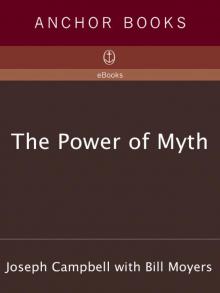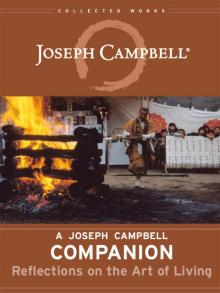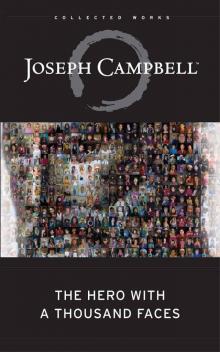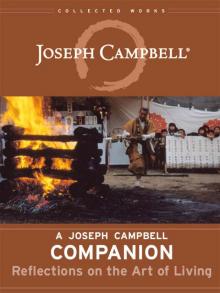- Home
- Joseph Campbell
Myths to Live By Page 2
Myths to Live By Read online
Page 2
I like to think of the year 1492 as marking the end—or at least the beginning of the end—of the authority of the old mythological systems by which the lives of men had been supported and inspired from time out of mind. Shortly after Columbus’s epochal voyage, Magellan circumnavigated the globe. Shortly before, Vasco da Gamma had sailed around Africa to India. The earth was beginning to be systematically explored, and the old, symbolic, mythological geographies discredited. In attempting to show that there was somewhere on earth a garden of Paradise, Saint Thomas Aquinas had declared, writing only two centuries and a half before Columbus sailed: “The situation of Paradise is shut off from the habitable world by mountains or seas, or by some torrid region, which cannot be crossed; and so people who have written about topography make no mention of it.” Fifty years after the first voyage, Copernicus published his paper on the heliocentric universe (1543); and some sixty-odd years after that, Galileo’s little telescope brought tangible confirmation to this Copernican view. In the year 1616 Galileo was condemned by the Office of the Inquisition—like the boy beside me at the lunch counter, by his mother—for holding and teaching a doctrine contrary to Holy Scripture. And today, of course, we have those very much larger telescopes on the summits, for example, of Mount Wilson in California, Mount Palomar in the same state, Kitt Peak in Arizona, and Haleakala, Hawaii; so that not only is the sun now well established at the center of our planetary system, but we know it to be but one of some two hundred billion suns in a galaxy of such blazing spheres: a galaxy shaped like a prodigious lens, many hundreds of quintillion miles in diameter. And not only that! but our telescopes now are disclosing to us, among those shining suns, certain other points of light that are themselves not suns but whole galaxies, each as large and great and inconceivable as our own—of which already many thousands upon thousands have been seen. So that, actually, the occasion for an experience of awe before the wonder of the universe that is being developed for us by our scientists surely is a far more marvelous, mind-blowing revelation than anything the prescientific world could ever have imagined. The little toy-room picture of the Bible is, in comparison, for children—or, in fact, not even for them any more, to judge from the words of that young scholar beside me at the counter, who, with his “Yes, I know, but this was a scientific paper,” had already found a way to rescue his learning from the crumbling medieval architecture of his mother’s Church.
For not only have all the old mythic notions of the nature of the cosmos gone to pieces, but also those of the origins and history of mankind. Already in Shakespeare’s day, when Sir Walter Raleigh arrived in America and saw here all the new animals unknown on the other side, he understood as a master mariner that it would have been absolutely impossible for Noah to have packed examples of every species on earth into any ark, no matter how large. The Bible legend of the Flood was untrue: a theory that could not be “factualized.” And we today (to make matters worse) are dating the earliest appearance of manlike creatures on this earth over a million years earlier than the Biblical date for God’s creation of the world. The great paleolithic caves of Europe are from circa 30,000 B.C.; the beginnings of agriculture, 10,000 B.C. or so, and the first substantial towns about 7,000. Yet Cain, the eldest son of Adam, the first man, is declared in Genesis 4:2 and 4:17 to have been “a tiller of the ground” and the builder of a city known as Enoch in the land of Nod, east of Eden. The Biblical “theory” has again been proved false, and “they have found the bones!”
They have found also the buildings—and these do not corroborate Scripture, either. For example, the period of Egyptian history supposed to have been of the Exodus—of Ramses II (1301–1234 B.C.), or perhaps Merneptah (1234–1220 B.C.) or Seti II (1220–1200 B.C.)—is richly represented in architectural and hieroglyphic remains, yet there is no notice anywhere of anything like those famous Biblical plagues, no record anywhere of anything even comparable. Moreover, as other records tell, Bedouin Hebrews, the “Habiru,” were already invading Canaan during the reign of Ikhnaton (1377–1358 B.C.), a century earlier than the Ramses date. The long and the short of it is simply that the Hebrew texts from which all these popular Jewish legends of Creation, Exodus, Forty Years in the Desert, and Conquest of Canaan are derived were not composed by “God” or even by anyone named Moses, but are of various dates and authors, all much later than was formerly supposed. The first five books of the Old Testament (Torah) were assembled only after the period of Ezra (fourth century B.C.), and the documents of which it was fashioned date all the way from the ninth century B.C. (the so-called J and E texts) to the second or so (the P, or “priestly” writings). One notices, for example, that there are two accounts of the Flood. From the first we learn that Noah brought “two living things of every sort” into the Ark (Book of Genesis, 6:19–20; P text, post-Ezra), and from the second, “seven pairs of all clean animals, the male and his mate, and a pair of the animals that are not clean” (Genesis, 7:2–3; J text, c. 800 B.C. ± 50). We also find two stories of Creation, the earlier in Genesis 2, the later in Genesis 1. In 2, a garden has been planted and a man created to tend it; next the animals are created, and finally (as in dream) Mother Eve is drawn from Adam’s rib. In Genesis 1, on the other hand, God, alone with the cosmic waters, says, “Let there be light,” etc., and, stage by stage, the universe comes into being: first, light; and the sun, three days later; then, vegetables, animals, and finally mankind, male and female together. Genesis 1 is of about the fourth century B.C. (the period of Aristotle), and 2, of the ninth or eighth (Hesiod’s time).
Fig. 1.4 — Pyramid of the Sun
Comparative cultural studies have now demonstrated beyond question that similar mythic tales are to be found in every quarter of this earth. When Cortes and his Catholic Spaniards arrived in Aztec Mexico, they immediately recognized in the local religion so many parallels to their own True Faith that they were hard put to explain the fact. There were towering pyramidal temples, representing, stage by stage, like Dante’s Mountain of Purgatory, degrees of elevation of the spirit. There were thirteen heavens, each with its appropriate gods or angels; nine hells, of suffering souls. There was a High God above all, who was beyond all human thought and imaging.
There was even an incarnate Saviour, associated with a serpent, born of a virgin, who had died and was resurrected, one of whose symbols was a cross. The padres, to explain all this, invented two myths of their own. The first was that Saint Thomas, the Apostle to the Indies, had probably reached America and here preached the Gospel; but, these shores being so far removed from the influence of Rome, the doctrine had deteriorated, so that what they were seeing around them was simply a hideously degenerate form of their own revelation. And the second explanation, then, was that the devil was here deliberately throwing up parodies of the Christian faith, to frustrate the mission.
Modern scholarship, systematically comparing the myths and rites of mankind, has found just about everywhere legends of virgins giving birth to heroes who die and are resurrected. India is chock-full of such tales, and its towering temples, very like the Aztec ones, represent again our many-storied cosmic mountain, bearing Paradise on its summit and with horrible hells beneath. The Buddhists and the Jains have similar ideas. And, looking backward into the pre-Christian past, we discover in Egypt the mythology of the slain and resurrected Osiris; in Mesopotamia, Tammuz; in Syria, Adonis; and in Greece, Dionysos: all of which furnished models to the early Christians for their representations of Christ.
Now the peoples of all the great civilizations everywhere have been prone to interpret their own symbolic figures literally, and so to regard themselves as favored in a special way, in direct contact with the Absolute. Even the polytheistic Greeks and Romans, Hindus and Chinese, all of whom were able to view the gods and customs of others sympathetically, thought of their own as supreme or, at the very least, superior; and among the monotheistic Jews, Christians, and Mohammedans, of course, the gods of others are regarded as no gods at all, but devils, and their wo
rshipers as godless. Mecca, Rome, Jerusalem, and (less emphatically) Benares and Peking have been for centuries, therefore, each in its own way, the navel of the universe, connected directly—as by a hot line—with the Kingdom of Light or of God.
However, today such claims can no longer be taken seriously by anyone with even a kindergarten education. And in this there is serious danger. For not only has it always been the way of multitudes to interpret their own symbols literally, but such literally read symbolic forms have always been—and still are, in fact—the supports of their civilizations, the supports of their moral orders, their cohesion, vitality, and creative powers. With the loss of them there follows uncertainty, and with uncertainty, disequilibrium, since life, as both Nietzsche and Ibsen knew, requires life-supporting illusions; and where these have been dispelled, there is nothing secure to hold on to, no moral law, nothing firm. We have seen what has happened, for example, to primitive communities unsettled by the white man’s civilization. With their old taboos discredited, they immediately go to pieces, disintegrate, and become resorts of vice and disease.
Today the same thing is happening to us. With our old mythologically founded taboos unsettled by our own modern sciences, there is everywhere in the civilized world a rapidly rising incidence of vice and crime, mental disorders, suicides and dope addictions, shattered homes, impudent children, violence, murder, and despair. These are facts; I am not inventing them. They give point to the cries of the preachers for repentance, conversion, and return to the old religion. And they challenge, too, the modern educator with respect to his own faith and ultimate loyalty. Is the conscientious teacher—concerned for the moral character as well as for the book-learning of his students—to be loyal first to the supporting myths of our civilization or to the “factualized” truths of his science? Are the two, on level, at odds? Or is there not some point of wisdom beyond the conflicts of illusion and truth by which lives can be put back together again?
That is a prime question, I would say, of this hour in the bringing up of children. That is the problem, indeed, that was sitting beside me that day at the lunch counter. In that case, both teacher and parent were on the side of an already outdated illusion; and generally—or so it looks to me—most guardians of society have a tendency in that direction, asserting their authority not for, but against the search for disturbing truths. Such a trend has even turned up recently among social scientists and anthropologists with regard to discussions of race. And one can readily understand, even share in some measure, their anxiety, since lies are what the world lives on, and those who can face the challenge of a truth and build their lives to accord are finally not many, but the very few.
It is my considered belief that the best answer to this critical problem will come from the findings of psychology, and specifically those findings have to do with the source and nature of myth. For since it has always been on myths that the moral orders of societies have been founded, the myths canonized as religion, and since the impact of science on myths results—apparently inevitably—in moral disequilibration, we must now ask whether it is not possible to arrive scientifically at such an understanding of the life-supporting nature of myths that, in criticizing their archaic features, we do not misrepresent and disqualify their necessity—throwing out, so to say, the baby (whole generations of babies) with the bath.
Traditionally, as I have already said, in the orthodoxies of popular faiths mythic beings and events are generally regarded and taught as facts; and this particularly in the Jewish and Christian spheres. There was an Exodus from Egypt; there was a Resurrection of Christ. Historically, however, such facts are now in question; hence, the moral orders, too, that they support.
When these stories are interpreted, though, not as reports of historic fact, but as merely imagined episodes projected onto history, and when they are recognized, then, as analogous to like projections produced elsewhere, in China, India, and Yucatán, the import becomes obvious; namely, that although false and to be rejected as accounts of physical history, such universally cherished figures of the mythic imagination must represent facts of the mind: “facts of the mind made manifest in a fiction of matter,” as my friend the late Maya Deren once phrased the mystery. And whereas it must, of course, be the task of the historian, archaeologist, and prehistorian to show that the myths are as facts untrue—that there is no one Chosen People of God in this multiracial world, no Found Truth to which we all must bow, no One and Only True Church—it will be more and more, and with increasing urgency, the task of the psychologist and comparative mythologist not only to identify, analyze, and interpret the symbolized “facts of the mind,” but also to evolve techniques for retaining these in health and, as the old traditions of the fading past dissolve, assist mankind to a knowledge and appreciation of our own inward, as well as the world’s outward, orders of fact.
There has been among psychologists a considerable change of attitude in this regard during the past three-quarters of a century or so. When reading the great and justly celebrated Golden Bough of Sir James G. Frazer, the first edition of which appeared in 1890, we are engaged with a typically nineteenth-century author, whose belief it was that the superstitions of mythology would be finally refuted by science and left forever behind. He saw the basis of myth in magic, and of magic in psychology. His psychology, however, being of an essentially rational kind, insufficiently attentive to the more deeply based, irrational impulsions of our nature, he assumed that when a custom or belief was shown to be unreasonable, it would presently disappear. And how wrong he was can be shown simply by pointing to any professor of philosophy at play in a bowling alley: watch him twist and turn after the ball has left his hand, to bring it over to the standing pins. Frazer’s explanation of magic was that because things are associated in the mind they are believed to be associated in fact. Shake a rattle that sounds like falling rain, and rain will presently fall. Celebrate a ritual of sexual intercourse, and the fertility of nature will be furthered. An image in the likeness of an enemy, and given the enemy’s name, can be worked upon, stuck with pins, etc., and the enemy will die. Or a piece of his clothing, lock of hair, fingernail paring, or other element once in contact with his person can be treated with a like result. Frazer’s first law of magic, then, is that “like produces like,” an effect resembles its cause; and his second, that “things which once were in contact with each other continue to act on each other at a distance after the physical contact has been severed.” Frazer thought of both magic and religion as addressed finally and essentially to the control of external nature; magic mechanically, by imitative acts, and religion by prayer and sacrifice addressed to the personified powers supposed to control natural forces. He seems to have had no sense at all of their relevance and importance to the inward life, and so was confident that, with the progress and development of science and technology, both magic and religion would ultimately fade away, the ends that they had been thought to serve being better and more surely served by science.
Simultaneously with these volumes of Frazer, however, there was appearing in Paris a no less important series of publications by the distinguished neurologist Jean Martin Charcot, treating of hysteria, aphasia, hypnotic states, and the like; demonstrating also the relevance of these findings to iconography and to art. Sigmund Freud spent a year with this master in 1885 and during the first quarter of the present century carried the study of hysteria and of dreams and myths to new depths. Myths, according to Freud’s view, are of the psychological order of dream. Myths, so to say, are public dreams; dreams are private myths. Both, in his opinion, are symptomatic of repressions of infantile incest wishes, the only essential difference between a religion and neurosis being that the former is the more public. The person with a neurosis feels ashamed, alone and isolated in his illness, whereas the gods are general projections onto a universal screen. They are equally manifestations of unconscious, compulsive fears and delusions. Moreover, all the arts, and particularly religious arts, are, in Freu
d’s view, similarly pathological; likewise, all philosophies. Civilization itself, in fact, is a pathological surrogate for unconscious infantile disappointments. And thus Freud, like Frazer, judged the worlds of myth, magic, and religion negatively, as errors to be refuted, surpassed, and supplanted finally by science.
An altogether different approach is represented by Carl G. Jung, in whose view the imageries of mythology and religion serve positive, life-furthering ends. According to his way of thinking, all the organs of our bodies—not only those of sex and aggression—have their purposes and motives, some being subject to conscious control, others, however, not. Our outward-oriented consciousness, addressed to the demands of the day, may lose touch with these inward forces; and the myths, states Jung, when correctly read, are the means to bring us back in touch. They are telling us in picture language of powers of the psyche to be recognized and integrated in our lives, powers that have been common to the human spirit forever, and which represent that wisdom of the species by which man has weathered the millenniums. Thus they have not been, and can never be, displaced by the findings of science, which relate rather to the outside world than to the depths that we enter in sleep. Through a dialogue conducted with these inward forces through our dreams and through a study of myths, we can learn to know and come to terms with the greater horizon of our own deeper and wiser, inward self. And analogously, the society that cherishes and keeps its myths alive will be nourished from the soundest, richest strata of the human spirit.
However, there is a danger here as well; namely, of being drawn by one’s dreams and inherited myths away from the world of modern consciousness, fixed in patterns of archaic feeling and thought inappropriate to contemporary life. What is required, states Jung therefore, is a dialogue, not a fixture at either pole—a dialogue by way of symbolic forms put forth from the unconscious mind and recognized by the conscious in continuous interaction.

 The Power of Myth
The Power of Myth A Joseph Campbell Companion: Reflections on the Art of Living
A Joseph Campbell Companion: Reflections on the Art of Living The Hero with a Thousand Faces
The Hero with a Thousand Faces Myths to Live By
Myths to Live By A Joseph Campbell Companion: Reflections on the Art of Living (Collected Works of Joseph Campbell)
A Joseph Campbell Companion: Reflections on the Art of Living (Collected Works of Joseph Campbell)